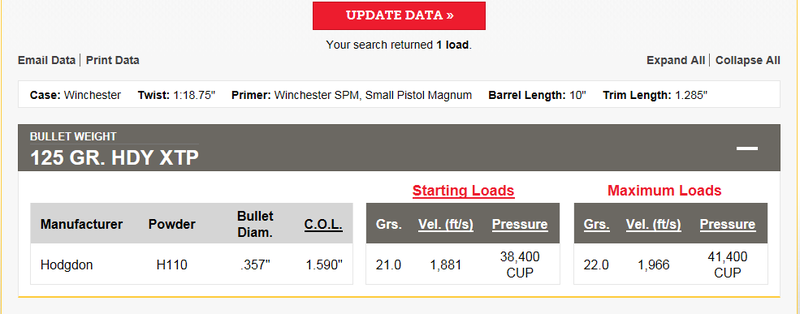I've seen slight differences before when going from a manual to the Hodgdon site, but never this much of a difference.
Hornady's 7 edition manual lists a range of loads using a 140 grain xtp using H110 going from 15.7-18.4. The test gun is an 8" Python.
Hodgdon's site uses the exact same bullet and has a lower charge....a heck of a lot lower charge. ...12.0-14.5.
Four grains difference?
Hodgdon lists 16.7 as max with a 158 xtp which is in line with what I've seen in manuals.
I'm inclined to ignore the hodgdon data on the 140.

|
   
   
|


|




 Reply With Quote
Reply With Quote
















